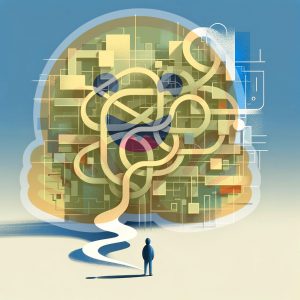Hugging Face is revolutionizing access to state-of-the-art natural language processing (NLP) technologies, making it simpler for developers and researchers to tailor large language models (LLMs) for their specific needs. Through its Transformers library, the platform emphasizes both accessibility and customization, positioning itself as a vital resource for pushing the boundaries of AI applications in NLP.
Embarking on the Hugging Face Journey
Navigating Hugging Face’s extensive offerings can be daunting, even though it has become a beacon for those diving into the world of LLMs. Despite its apparent complexity, the key to success lies in its wealth of documentation, tutorials, and community insights available, ensuring you stay abreast of the latest developments and best practices.
Fine-Tuning Essentials
Fine-tuning encompasses a series of steps that, while fundamental, involve significant detail and precision:
- Data Preparation: The journey begins with organizing your dataset in a suitable format, with .csv being a common choice due to its wide compatibility and ease of use. This step is more than just formatting; it involves cleaning the data, ensuring it’s representative of the problem you’re solving, and splitting it into training, validation, and test sets. The goal is to prepare your dataset in a way that it can effectively fine-tune the model without bias or error.
- Model and Tokenizer Loading: Next, selecting the right model and tokenizer is crucial. This decision is not trivial as it involves navigating through a myriad of available models, each with its own set of parameters and capabilities. The choice of tokenizer, which prepares your text data for the model, must also be compatible with your selected model. This step is fraught with technical decisions, where understanding the nuances of each parameter’s impact on your model’s performance becomes key. It’s a balancing act between the model’s complexity, its expected performance, and the resources available.
- Training: The final step involves training your model using the prepared data. This is where a Trainer comes into play, automating the process of feeding data to the model, adjusting weights, and optimizing for performance. However, the simplicity of initiating a training session belies the complexity beneath. Adjusting for GPU memory usage becomes critical here, as models can be resource-intensive (see the discussion below).
Navigating the Nuances of Fine-Tuning
Achieving success in fine-tuning within Hugging Face’s ecosystem involves mastering several subtleties:
- Model Loading: Approach this with a preference for default parameters, adjusting only as necessary. Be prepared for errors with minimal feedback, prompting a review of your parameter choices.
- GPU Memory Management: Efficient use of GPU capabilities is crucial. Consider using lower precision formats like fp16 or bf16 to conserve GPU memory, and adjust batch sizes as needed to fit your hardware’s constraints.
- Batch Size Optimization: Finding the optimal batch size is a balance between efficiency and your system’s limitations, often requiring experimentation to get right.
- Intermediate Evaluations: Regularly assessing your model’s performance during training allows for adjustments and helps identify the most effective model iteration.
Leveraging Multiple GPUs and Quantization
For projects demanding higher computational power, employing multiple GPUs and utilizing libraries like deepspeed can significantly enhance the fine-tuning process. This involves a strategic calculation of total batch size to balance tuning speed with accuracy.
Quantization offers a pathway to increased efficiency, reducing model size and improving inference speed by converting model weights to lower-precision formats after training. This step is crucial for deploying resource-efficient models without significantly compromising performance.
Final Thoughts
While the journey of fine-tuning LLMs with Hugging Face involves a detailed understanding of various processes and strategies, focusing on streamlined approaches and maintaining a grasp on fundamental principles can demystify the task. From navigating the platform’s resources to optimizing for GPU efficiency, and from multi-GPU strategies to the advantages of quantization, the goal is clear: efficient and effective fine-tuning to harness the full potential of AI in your projects.
Need assistance on your journey? Remember, help is just a message away, ensuring you’re never alone as you navigate the complexities of fine-tuning with Hugging Face.








